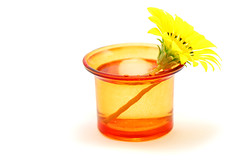At one point or the other, all of us have come across a situation where our photo just does not feel right. The whites in the image look more like sickly yellow, or magenta or some other color; other than white.
One of the common reasons for this is that your camera was unable to correctly estimate the color temperature. Back in the old days of film, there was no concept of white balance. Professional photographers would load their cameras with specific temperature balanced films. For example, if the photographer knew in advance that his shooting would be done under tungsten lights, then he would load a tungsten balanced film. Similarly if the shooting was done in daylight, then he would load a daylight balanced film. You can understand how complicated this process would be.
Luckily for us, our digital cameras are not film-based but sensor based; and the software in the camera can automatically interpret the data coming from the sensor and correct it to match the lighting conditions. The trick is to figure out the correct lighting conditions.
Digital cameras, to a very large extent, are very good at determining the lighting conditions at the time of taking the picture. They measure the color temperature and the software manipulates the image to match the color temperature.
But they do get confused now and then. This mostly happens when shooting under mixed lighting conditions (a room lit simultaneously by light bulbs and flourescent lights for example) or where the light is changing rapidly (theatre/concerts etc.).
One of the best ways of overcoming white balance confusion is to shoot in RAW and then determine the correct white balance during post processing.
If RAW shooting is not feasible (or you don't want to spend time in post processing), then the next best option is to use a preset white balance. Almost all advanced digital cameras allow you to "compute" an accurate white balance.
To get a proper white balance:
1. Set your camera to measure the white balance. On my Nikon D200, I turn the white balance dial till it says "PRE". On my Casio P&S, the option is available in the menu. Each camera will have it's own way of measuring the white balance.
2. Put a white A4 paper in front of the subject. If you are shooting a person, you can make the person hold the paper.
3. Focus on the paper so that the camera can see only the paper and nothing else. You may have to move in a little closer or zoom in.
4. Click the shutter button and wait for your camera to measure the balance and set the temperature.
5. Now you can start taking pictures with the knowledge that the whites in the pictures will actually look white.
6. Do remember to reset the white balance once you are finished (or if the lighting conditions change) otherwise your camera will be stuck on the last known white balance and subsequent pictures will not come out properly.
Some people deliberately fool the white balance on the camera to get artistic results. But that's another story.

1 comment:
Thank you Cajie for your post on white balance. I have always found it difficult to get the perfect white background.
Post a Comment